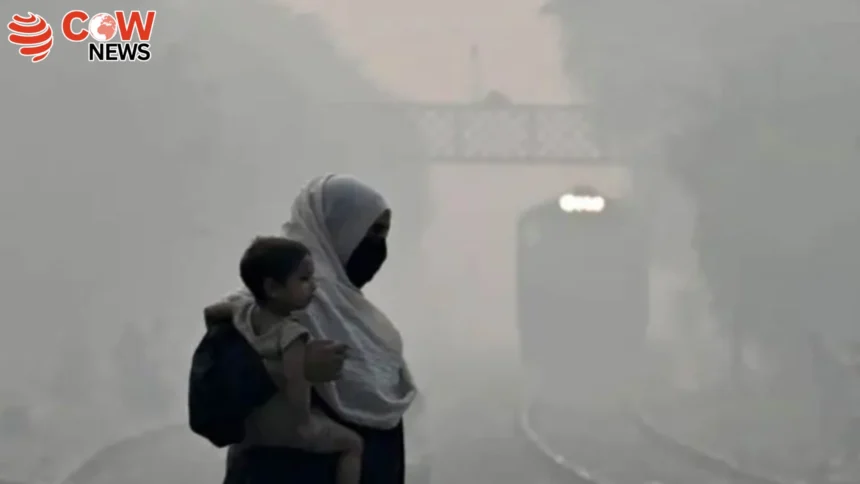LAHORE( The COW News Digital) The air quality across several major cities of Punjab has plummeted to hazardous levels as thick smog continues to engulf the province, triggering health concerns and prompting urgent government action.
According to official data, Faisalabad, Gujranwala, Sialkot, and Multan are currently facing extremely poor air quality, while Lahore has once again topped the list of the world’s most polluted cities. The provincial capital recorded an Air Quality Index (AQI) of 485, placing it in the “hazardous” category — a level at which outdoor exposure can severely affect even healthy individuals.
Faisalabad reported the worst air conditions in the region with an AQI of 833, followed by Gujranwala at 764, and Multan at 305, all far exceeding safe limits. In comparison, New Delhi, India’s capital, ranked second globally with an AQI of 445, reflecting the ongoing environmental crisis gripping South Asia.
Environmental experts warn that prolonged exposure to such pollution levels could lead to serious respiratory and cardiovascular illnesses. Children, the elderly, and individuals with asthma or heart disease are considered most at risk. Visibility on major roads has also been affected, raising the likelihood of traffic accidents and travel delays.
In response to the worsening situation, the Punjab Environment Department has intensified anti-smog operations across the province. Authorities have banned dry sweeping in public spaces and along major highways to prevent dust from worsening air pollution. Additionally, the use of lime-based cleaning materials on roads has been completely prohibited, as such practices contribute to airborne particulate matter.
Officials have urged residents to limit outdoor activities, wear protective masks, and avoid unnecessary travel during peak smog hours, typically early morning and late evening. Industrial units violating emissions standards have also been warned of strict penalties and potential shutdowns.
Meteorologists predict that stagnant weather patterns and low wind speeds will likely keep pollution trapped over Punjab for the next few days, with only a strong rainfall system expected to bring temporary relief.
Meanwhile, environmental activists have renewed calls for sustainable urban planning, strict industrial regulations, and a shift toward cleaner energy sources to tackle the recurring smog crisis that has become an annual nightmare for Punjab’s residents.








